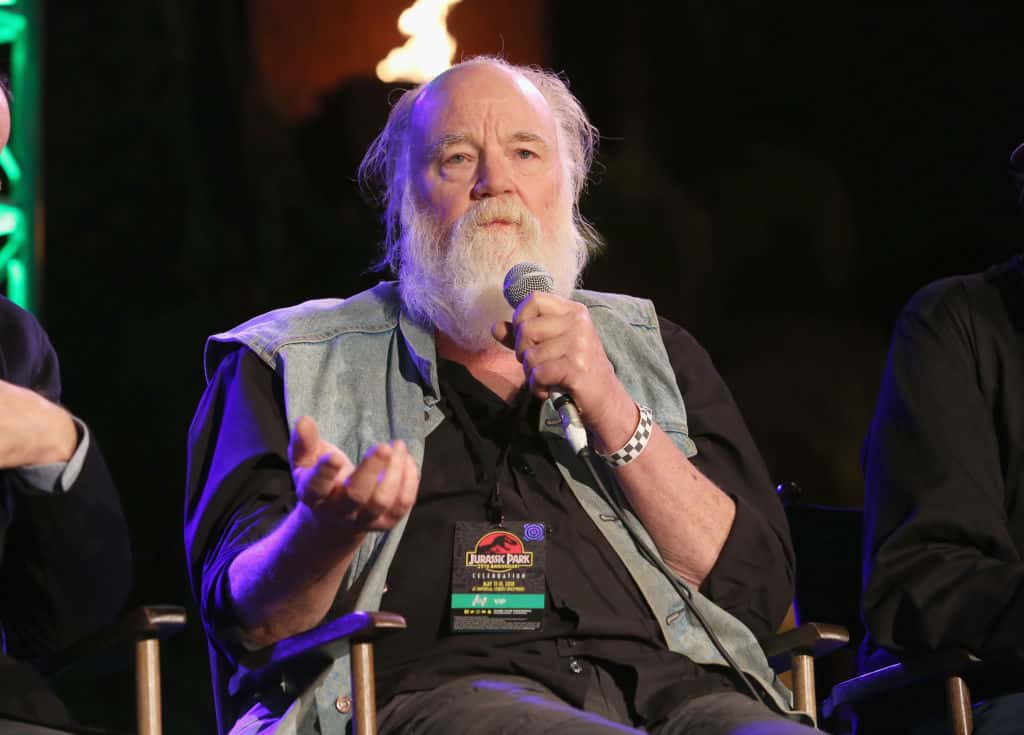Even if you haven’t heard of Phil Tippett, you’ve almost definitely seen his work. The Imperial Walkers in The Empire Strikes Back. ED-209 from Robocop. The dinosaurs in Jurassic Park. Before the days of CGI, if you wanted the best visual effects, you went to Phil Tippett.
 Star Wars: Episode V - The Empire Strikes Back (1980), Lucasfilm
Star Wars: Episode V - The Empire Strikes Back (1980), Lucasfilm
Movie Magic
Tippett saw 1958’s The 7th Voyage Of Sinbad when he was just seven, and the experience changed the course of his life. Though the movie’s jerky, stop-motion monsters might seem quaint to modern audiences, for Tippett, he saw his life’s calling up there on the screen.
After getting a degree in Fine Art from the University of California, Irvine, Tippett got work with a small animation studio, Cascade Pictures. While working for Cascade, a young George Lucas from Industrial Light & Magic approached Tippett with an idea.
Lucas was working on a new science fiction movie called Star Wars, and he imagined a game of chess, played by holographic aliens and monsters. He came to the right guy. Tippett gave him exactly what he asked for. It was the start of a beautiful partnership.
The Best Of The Best
After Star Wars, Lucas made Tippett the head of animation at ILM, where he created some of the most legendary practical effects in film history. His greatest innovation was called “go motion,” which simulated the motion blur effect of live-action footage with his stop-motion models, providing a fidelity and realism that put The 7th Voyage Of Sinbad to shame.
By 1991, Tippett was already a legend, with an Academy Award on his mantle to prove it. That’s when Steven Spielberg came to him with a new project: Jurassic Park. At the time, nothing could compare with the quality of Tippett’s go motion, and Spielberg wanted him to create the movie’s dinosaurs.
A Computer-Generated Meteor
Then, in the blink of an eye, everything changed. Another employee at ILM, Dennis Muren, prepared a computer-generated animation of a T. Rex, and Spielberg loved it. Special effects would never be the same.
When Tippett learned that Spielberg was going to use computer-generated effects for the dinosaurs instead of go motion, he uttered the most famous sentence of his career: “I think I’m extinct”.
Tippett, for what it’s worth, was not extinct. He kept working on Jurassic Park, which eventually won him his second Academy Award. He continued to innovate in the field of special effects and was nominated for yet another Oscar in 1998, this time for his work on Starship Troopers. Still, the truth was undeniable: The industry had changed forever.
A Mad God
Though Tippett adapted with the times and moved on to other techniques, he never lost his fondness for go motion. In the early 90s, while between jobs, he started working on his own, independent stop-motion film, using the techniques that made him a legend.
It took him three decades, but in 2021, he finally released the film: Mad God. A psychedelic trip through Tippett’s nightmarish psyche made entirely using practical effects, Mad God was far too grotesque and surreal for mass audiences—but for the select group of cinephiles who have sought it out, it stands as proof of one thing.
Though CGI may have taken over, Phil Tippett is anything but “extinct”.









